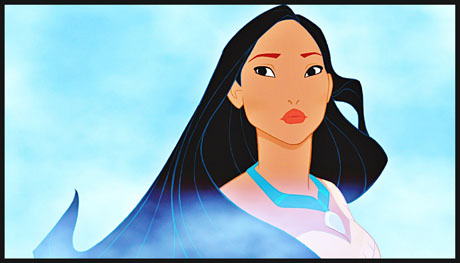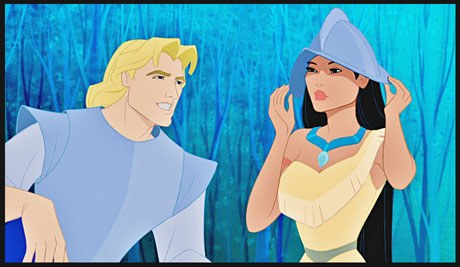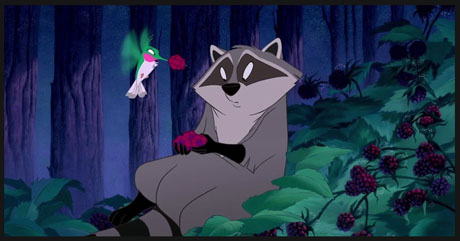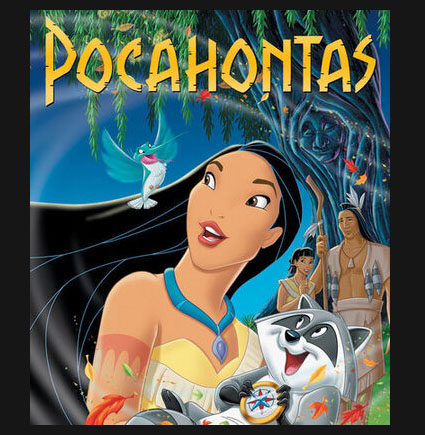
In the summer of 1995, there was a shadow that loomed over the Walt Disney Animation Studio. It was a shadow in the shape of The Lion King.
Just one year prior, the tale of Simba had skyrocketed past all box-office expectations and made its way into our collective pop-culture as few films do. For the first time in a long time, the word “blockbuster” was associated with a Disney animated film.
The shadow of that success was quite large. There was a lot riding on what came after The Lion King at Disney.
What came next was Pocahontas.

It originating years prior with an idea from the film’s co-director Mike Gabriel at the Studio’s famed “Gong Show” meetings, where artists would have the opportunity to pitch ideas they had for future animated projects.
Gabriel crafted a make-shift “movie poster” he created with an image of the character Tiger Lilly from “Peter Pan,” and sold the idea to then Disney CEO Michael Eisner. Unbeknownst to Gabriel, Eisner and Roy E. Disney had been considering a “Romeo and Juliet”-like love story being told in animation and they saw “Pocahontas” as perfectly fitting the bill.
“Pocahontas” would tell the story of the title character, a young Native American woman (and daughter of the Chief) and an English Soldier named John Smith, who develop a romantic relationship, when English Colonists invade Virginia in the 17th Century.
At the helm of the film, Gabriel was partnered with Eric Goldberg (the brilliant animator behind “Aladdin’s” Genie) as co-directors of “Pocahontas.” For the first time, a Disney animated film would be based on history (albeit loosely based). The filmmakers focused on not only bringing history to life, but also being true and respectful to the Native American culture.

In an interview in early 1995, Goldberg recalled, “It would have been very easy for us to make a film that included teepees, totem poles and long, feathery headdresses, they way most people are used to seeing those images from Southwest American Indians. But, we didn’t want to do that.”
The filmmakers embarked on a trip to Jamestown, Virginia and worked closely with the Native American community. “We met with surviving members of the Powhatan nation,” said Goldberg. “We spoke with them and got a flavor of what they were like and what they found important. They found a sense of community very important and they wanted to see that portrayed in the film.”
In addition, filmmakers enlisted Native American actors Irene Bedard as the voice of Pocahontas and Russell Means as Chief Powhatan, alongside actors such as Mel Gibson as John Smith, Linda Hunt as Grandmother Willow and Disney stalwart David Ogden Stivers as the villain Ratcliffe,
From the research done for the film, came important details that were incorporated into the film, as animator Ruben Aquino discussed at the time. “It was common for the warriors of that tribe, or many of the tribes in that area, to shave only o be side of their head,” said Aquino, who served as Supervising Animator for Chief Powhatan. “It was because a lot of them were archers. So, to keep the bow arm free and to keep the hair out of the bow string, they shaved their hair on that side.”
In addition to these accurate elements, the filmmakers also designed a unique look for “Pocahontas,” one based on artist Eyvind Earl and the detailed style he brought to Disney’s 1959 film Sleeping Beauty.

“The design itself is very crisp,” said Goldberg. “There aren’t a lot of round edges and circles and things that are ‘squashy and stretchy,’ that you have a lot of cartoon liberty with. So, it means that every little nick and pop in the animation will show. It really was a daunting task we set for everybody.”
Also challenging was the more realistic, subtle acting that the animators were tasked with bringing to the film. Master animator Glen Keane, who served as Supervisor for “Pocahontas,” sought out the power of the quieter moments in the film. He even brought his own personal experiences to the pivotal scene in the film where Pocahontas and John Smith meet for the first time.
“The more I thought about it, I said, ‘Well, how did it work out for me, when I met my wife,’” Keane recalled in 1995. “It was kind of a love at first sight thing. I met her at a movie in 1972, on line to see “The Godfather.” We were both seniors in high school. This girl was standing behind me and I turned around and she was there and i don’t remember anything that she said. But, I remember the whole time; I remember the orange blossoms in the air, I remember the temperature, the feelings that were there.
“I thought this is what this moment [where Pocahontas and John Smith meet] has to be. It has to be something bigger than life, beyond just these two people standing there.” Keane also added, “The place where they met was very important. To have it in front of this waterfall, with just the roar of the waterfall behind them, the mist slowly revealing Pocahontas, kind of like clouds swirling around, made it very ethereal.”
These unique, daring elements were noted by critics and animation scholars when Pocahontas was released on June 16th, 1995. The film was also backed by a groundswell of marketing and publicity that turned the release of Pocahontas into an event.
Not only were there enough toys, T-shirts and fast food meals to satisfy any and every Disneyana collector, the music of Pocahontas also hit the Top 40 list as the eventual Oscar winning song, “Colors of the Wind” (sung in the film by Judy Kuhn and in the hit single by Vanessa Williams) played almost non-stop on radio stations that entire summer.

And, in a promotion that still rivals many mammoth movie premieres, Disney debuted Pocahontas to the public with the “Premiere in the Park” on June 10th, 1995, at which the Disney Studio screened the film on the Great Lawn of New York City’s Central Park, to a tremendous crowd of fans and families. Tickets to the event were provided by lottery, a live stage show with celebrity talent was included and after the film there were, of course, fireworks.
Even with such ubiquitous, positive feelings at the time, many were not kind to Pocahontas upon its initial release. As the film struggled to come anywhere close to The Lion King’s box-office performance, critics and audiences did not respond favorably, as it was so different from what had become expected from Disney. And, historians and some Native American groups were actually incensed with the liberties that the film took with facts.
As Pocahontas celebrates its 25th anniversary this Summer, it is very insightful to look back at just how daring and ambitious the film was, not just from an artistic standpoint, but a thematic one, as well.
In fact, Pocahontas remains even more timely over two decades later. In 1995, when co-director Mike Gabriel discussed the film’s message, he had no idea how relevant it would still be today.
“To me, its as simple os: our similarities are much greater than our differences,” said Gabriel, at the time. “Even though we all like to rant and rave that we’re all completely different and each nation and each culture has its own idiosyncrasies and separate ideas, I think we show in the movie that we’re not all that different.“
Gabriel also added, “We have to all extend toward each other; we have to meet each other half way and understand what the other person’s point of view is.”
- An Eye for A Classic: The 60th Anniversary of “Mr. Magoo’s Christmas Carol” - December 22, 2022
- A Very Merry Mickey: The 70th Anniversary of “Pluto’s Christmas Tree” - December 19, 2022
- A Fine French Feline Film: The 60th Anniversary of “Gay Pur-ee” - December 12, 2022


 June 16th, 2020
June 16th, 2020  Michael Lyons
Michael Lyons  Posted in
Posted in  Tags:
Tags: 






